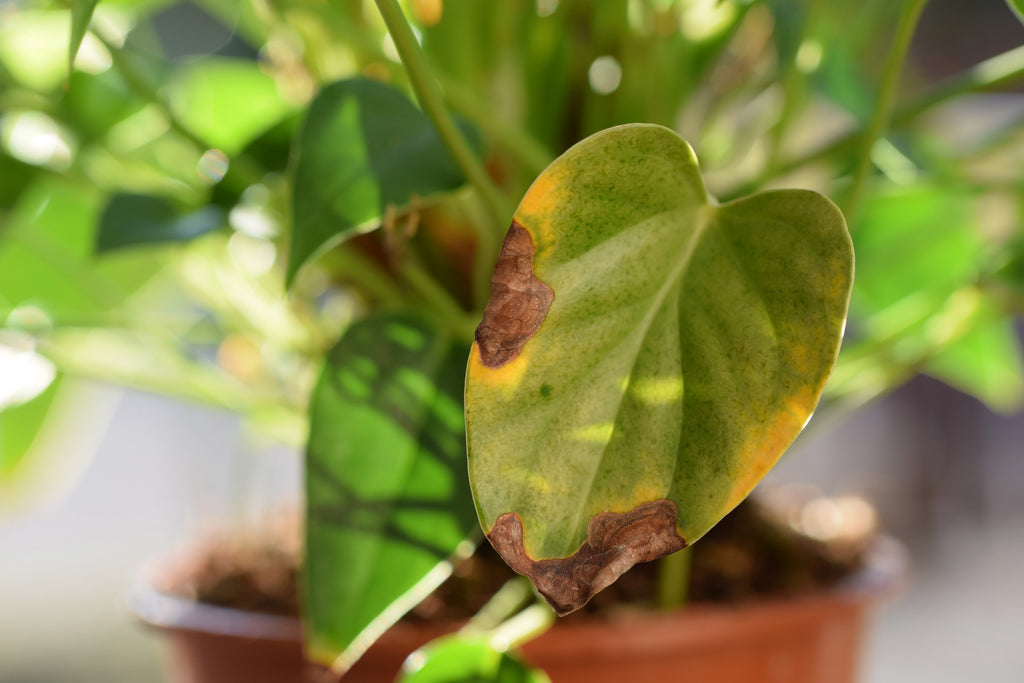Ah, spring! The season of renewal, growth, and... pests? Unfortunately, along with the warmer weather, spring often brings an influx of unwelcome visitors to our beloved green amigos. But fear not, plant parents! You’ve come to the right place. We’re going to walk through how to spot and identify the most common spring pests, and the best methods for evicting these plant squatters!
Pests often hitch a ride on new plants or sneak in through open windows and doors, or even on people and pets! They tend to favour plants that are stressed, or lack proper nutrients or water. That's why it's always a good idea to check over and quarantine all new plants for a couple of weeks before fully integrating them into your plant family to avoid any potential spread of pests or disease.
The key to successful pest treatment is catching them early. Let's talk about some of the most common pests you might encounter this spring!

Spider Mites
Spotting Them: Spider mites can be tough to spot initially since they are so small, so regular checkups are a good idea! Look for fine webbing and tiny speck-like pests moving around, especially on the undersides of leaves.
Treatment: A good shower can help dislodge spider mites, or you can use a damp cloth to remove them by hand. For a stronger treatment, try a spray of insecticidal soap or neem oil diluted in water on the affected plants, being sure to treat the undersides of the leaves where these critters like to hide!

Thrips
Spotting Them: Keep an eye out for slender, winged insects on the undersides of leaves. You might also notice silvery trails on the foliage.
Treatment: Ladybugs or lacewings make excellent natural pest control. If you prefer something stronger, treat your plant with insecticidal soap or neem oil diluted in water.
Read here for more tips on thrips!
 Mealybugs
Mealybugs
Spotting Them: Keep an eye out for what looks like tiny, cottony masses on leaf axils and stems. They feed on the plant’s nutrients, which can cause wilting, yellowing, or distorted growth.
Treatment: A cotton swab dipped in rubbing alcohol can help take care of individual mealybugs. For bigger problems, try insecticidal soap or neem oil diluted in water. If the mealybugs are stubborn and these methods don’t work, chemical pesticides would be the next option.

Scale
Spotting Them: Scale insects look like small, raised bumps on stems and leaves. They might also leave behind a sticky honeydew that attracts sooty mold.
Treatment: Scale is unfortunately well protected from pesticides due to their hard, wax shield. For smaller plants, try submerging the plant in water for 15-20 minutes to soften the scale, making them easier to remove. For tougher scale or larger plants, give them a gentle scrub with rubbing alcohol on a cotton swab.

Fungus Gnats
Spotting Them: Fungus gnats are more annoying than they are harmful, and are often found when the soil is kept too damp, the perfect conditions for their larvae. Keep an eye out for tiny, dark-colored flies buzzing around your plants - sort of like mosquitoes.
Treatment: Let the soil dry out a bit between waterings to discourage fungus gnat larvae. Sticky traps can help catch the adult flies, and beneficial nematodes can take care of the larvae.
Beneficial Bugs
Not all bugs bug your plants! Some, like ladybugs, lacewings, and predatory mites are natural enemies of common pests and can help keep infestations in check. Encourage these beneficial insects by avoiding broad-spectrum pesticides, or buy them from your local garden center to incorporate them in your plant care routine.
Dealing with pests is almost like a rite of passage for plant parents, and it’s all part of the journey. Be sure to maintain a healthy plant environment through proper watering, good airflow, and regular cleaning to help deter any pesty hitchhikers, and check over your green amigos regularly. As we said, the earlier you catch them, the easier it is to remind them that they aren’t welcome!
For more information about pests and plant care, or to contact our team for tailored advice, head over to our Help Center!












